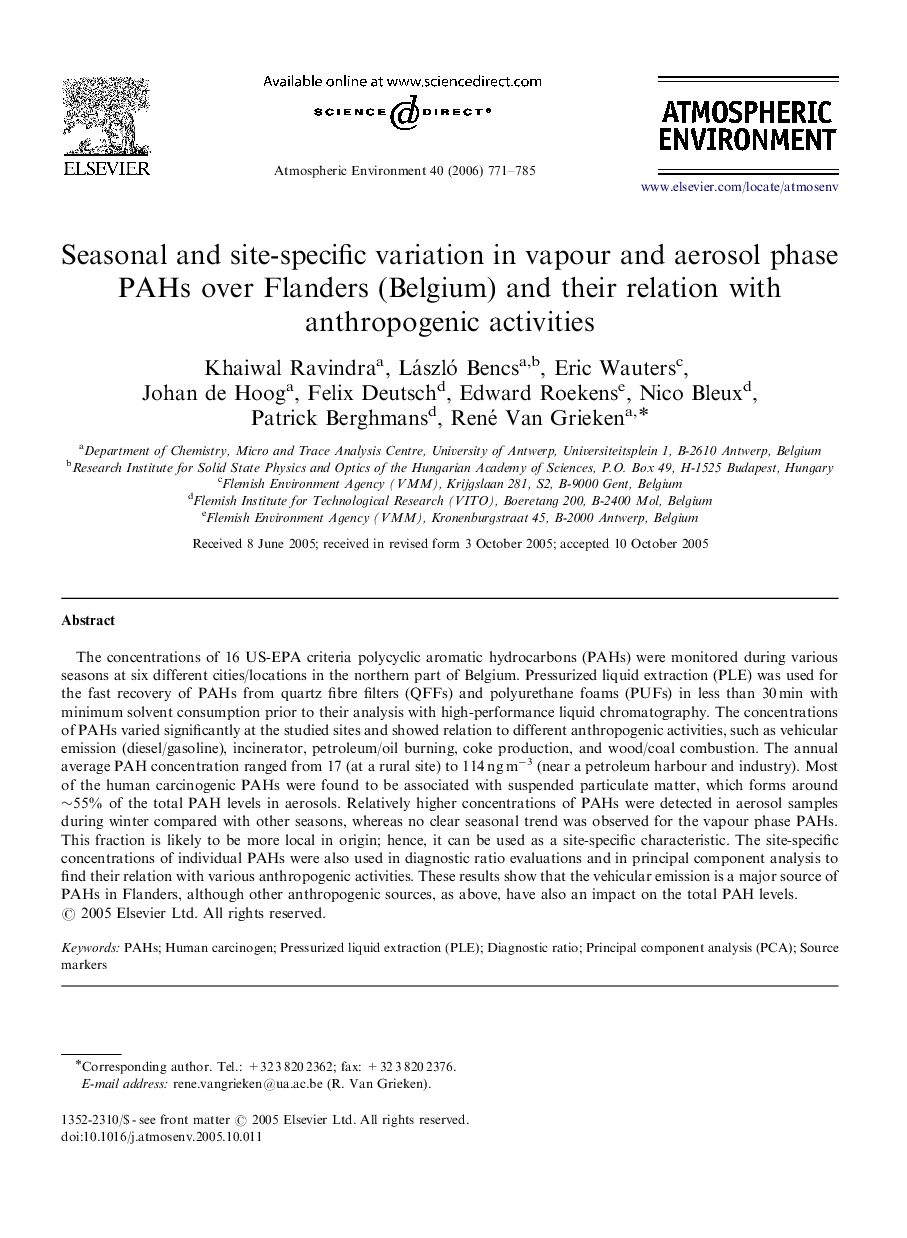| Article ID | Journal | Published Year | Pages | File Type |
|---|---|---|---|---|
| 4445047 | Atmospheric Environment | 2006 | 15 Pages |
The concentrations of 16 US-EPA criteria polycyclic aromatic hydrocarbons (PAHs) were monitored during various seasons at six different cities/locations in the northern part of Belgium. Pressurized liquid extraction (PLE) was used for the fast recovery of PAHs from quartz fibre filters (QFFs) and polyurethane foams (PUFs) in less than 30 min with minimum solvent consumption prior to their analysis with high-performance liquid chromatography. The concentrations of PAHs varied significantly at the studied sites and showed relation to different anthropogenic activities, such as vehicular emission (diesel/gasoline), incinerator, petroleum/oil burning, coke production, and wood/coal combustion. The annual average PAH concentration ranged from 17 (at a rural site) to 114 ng m−3 (near a petroleum harbour and industry). Most of the human carcinogenic PAHs were found to be associated with suspended particulate matter, which forms around ∼55% of the total PAH levels in aerosols. Relatively higher concentrations of PAHs were detected in aerosol samples during winter compared with other seasons, whereas no clear seasonal trend was observed for the vapour phase PAHs. This fraction is likely to be more local in origin; hence, it can be used as a site-specific characteristic. The site-specific concentrations of individual PAHs were also used in diagnostic ratio evaluations and in principal component analysis to find their relation with various anthropogenic activities. These results show that the vehicular emission is a major source of PAHs in Flanders, although other anthropogenic sources, as above, have also an impact on the total PAH levels.
